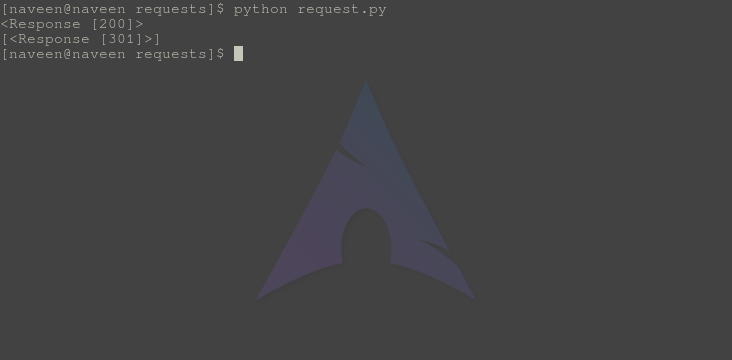response.history – Python请求
Python请求通常用于从特定资源 URI 中获取内容。每当我们通过Python向指定的 URI 发出请求时,它都会返回一个响应对象。现在,此响应对象将用于访问某些功能,例如内容、标题等。本文围绕如何从响应对象中检查response.history展开。 response.history返回一个包含请求历史的响应对象列表(url)。基本上,它以响应列表的形式显示了请求是如何到达目标的。
如何使用Python请求使用 response.history?
为了说明 response.history 的使用,让我们 ping geeksforgeeks.org。要运行此脚本,您需要在 PC 上安装Python和 requests。
先决条件——
- 下载并安装Python 3 最新版本
- 如何在Python中安装请求 – 适用于 windows、linux、mac
示例代码 –
# import requests module
import requests
# Making a get request
response = requests.get('https://geeksforgeeks.org')
# print response
print(response)
# print history
print(response.history)
示例实现——
将上述文件另存为request.py并使用
Python request.py
输出 -

检查输出开头的历史列表,它显示不同的响应。响应 301 显示重定向请求。
高级概念
在Python中有很多库可以发出 HTTP 请求,它们有 httplib、urllib、httplib2、treq 等,但 requests 是其中最好的,具有很酷的特性。如果请求的任何属性显示为 NULL,请使用以下属性检查状态代码。
requests.status_code如果 status_code 不在 200-29 范围内。您可能需要检查用于发出请求的方法开始 + 您请求资源的 url。
在评论中写代码?请使用 ide.geeksforgeeks.org,生成链接并在此处分享链接。